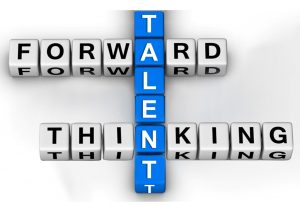
The terms Recruitment and Talent Acquisition are often used interchangeably but industry thought leaders understand that there is a distinct difference. Understanding this difference and adapting your internal processes accordingly will help your company evolve its hiring procedures and help you attract the top talent available on the market.
First let’s define each term. Then we can examine the gap between the two as they relate to the overall human capital life cycle.
Recruitment can be defined as a process of identifying, attracting, and onboarding a candidate to a specific position and meeting a dynamic business need. Talent Acquisition is an approach that is geared towards building relationships, anticipating future hiring needs, and creating a sustainable pool of candidates beyond the present business requirements. Recruitment can function as an independent process. However, Talent Acquisition has Recruitment as one of its many components. It is also important to note that while Recruitment and Talent Acquisition are different, that one is not better than the other. Both practices have applications and can serve your business needs.
Now that we have defined the terms, here are the elements that differentiate Recruitment from Talent Acquisition.
Recruiting |
Talent Acquisition |
|
| 1. Planning & Strategy |
Tactical – Filling specific, often time critical, positions either as they arise or with a limited forward looking plan | Strategic – Understanding the complete roles of all talent functions and how they relate to the business’ blueprint for success |
| 2. Segmentation |
Focus here is on the skills, requirements, and competencies associated with a specific position |
Depends on understanding the different work compartments within a company, as well as the different positions within those units |
| 3. Compliance |
Meets and follows guidelines | Looks to achieve far reaching goals and plans for levels of execution within hiring metrics |
| 4. Tools & Technology |
Used to source and manage applicant pool | Used to reach passive candidates, increase brand, streamline process, and provide for a positive candidate journey |
| 5. Metrics & Analytics |
Tracks applicants, time-to-fill, and other role specific metrics | Uses and analyzes pertinent information to continuously improve recruiting process and make better hiring decisions, ultimately improving quality of hire over time |
| 6. Branding |
Focused on reputation, reviews and traditional 4Ps of marketing approach:
|
Built on a culture approach that presents a positive company image differentiated by a reputation of quality products and services. Attracts candidates that seek out the organization through application of the new SAVE marketing approach:
|
| 7. Vision |
Short Term – Looks only as far as the next hire or open territory | Long Term – Aligns human capital needs to its business growth plan to find developable talent as future leaders and contributors |
| 8. Approach |
A Reactive approach will result in a pool of Active applicants that are on the market for a reason | A Proactive approach will focus on acquiring highly sought after Passive Candidates |
| 9. Process |
A Linear approach that returns results that must be repeated as needed | A Cyclic approach centered on interacting with potential candidates from numerous sources for current and future positions, some of which may not yet be specified. Leads to the development of Talent Pipelines |
| 10. Candidate Journey |
Looked at from a time-to-fill or cost-to-hire approach | Viewed from the candidate perspective to enhance communications, set timeline expectations, and provide for ease of interaction in the application process |
| 11. Partnerships |
Views vendors as a necessary evil (non-budgeted expense) that are only to be used after all internal resources have failed | Looks to outsource partners to advise and contribute to keep talent pipelines full even in the absence of an open requisition. Partners act as advisors and included in strategic planning |
After reviewing the 11 differences one might question their own internal process and approach to recruitment and talent acquisition. Refinement and constant development of all components will result in turning applicants into candidates and candidates into contributing team members. Keep in mind that just as Recruitment can function as a component of Talent Acquisition that Talent Acquisition is itself a segment of the much broader field of Talent Management and Development.

